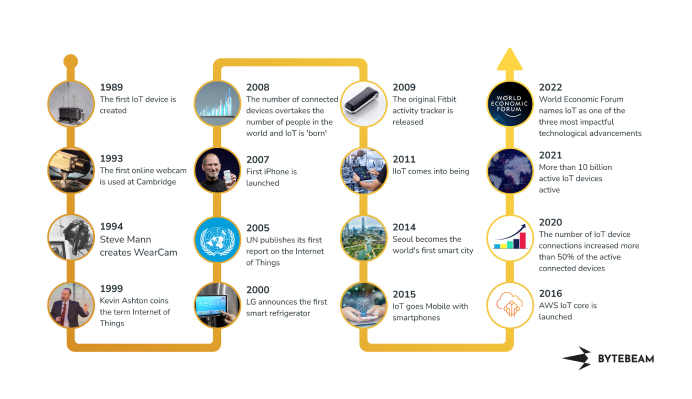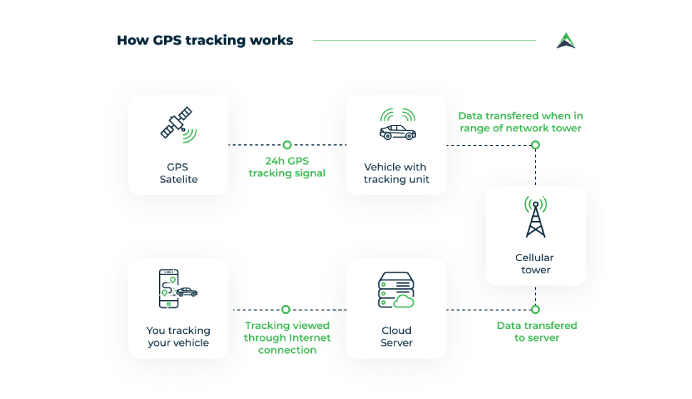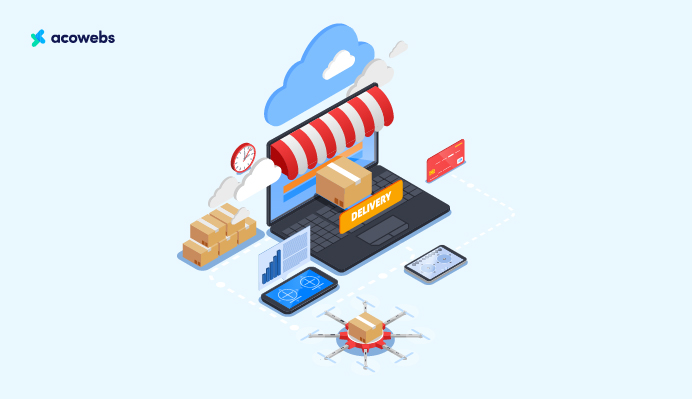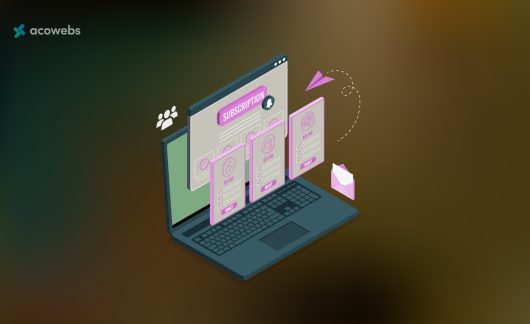Increased digital platform usage and the convenience of online shopping have enabled the eCommerce industry to grow rapidly in the recent past. At the moment, eCommerce companies have a lot of expectations when it comes to improving their logistics.
The underlying reason is simple: consumers today want delivery processes that are efficient, reliable, and very clear. They are not just important, but they are also one of the most significant components of the eCommerce business.
This is quite sensitive looking at the number of goods that can be termed as being moved on a daily basis. Hence, within this framework, companies are focusing on innovative solutions that will help reduce costs and enhance productivity.
The most interesting element of eCommerce logistics is the Internet of Things (IoT). It is now easy to monitor shipments, track inventory levels, and control warehousing operations with remarkable precision in your eCommerce business.
This article will highlight how interconnected devices and data-driven insights are making a difference in the supply chain from warehouse to doorstep.
Overview of IoT in eCommerce Logistics
IoT denotes the network of devices with sensors, software, and connectivity that gather, share, and analyze information in real-time.
The IoT global market is projected to have a value of US$947.50 billion by 2024, with the automotive industry being estimated to have a value of US$251.90 billion in contribution. By 2029, the market is estimated to reach an astonishing $1,560 billion, with a CAGR of 10.49% from 2024 to 2029.
With IoT, one can gather data, share information, and analyze different things in a surrounding environment enabled by various logistics of the network. These include inventory and warehousing, transportation, and last-mile delivery.
This is attained when devices and systems are connected through the internet. Below is an illustration of the evolution of the Internet of Things. It is a dynamic system that is open to new developments and changes in different areas of the eCommerce industry.

The Role of IoT in Logistics
What exactly does IoT in logistics entail? It entails the use of the most materials of supply chain operations and processes. Such devices contain other connected devices such as sensors, GPS, RFID, and smart cameras.
Passive RFID tags are the main source of information regarding items in transit, their environmental conditions, vehicles’ position, as well as the position of inventories of relevant contributor companies.
After the data gathered is processed locally, it is sent to the servers where it is further analyzed to enhance the overall management and efficiency of operations.
The inclusion of IoT in logistics is useful for its knowledge in rendering visibility and comprehension across the chain. Information that can be accessed in real time, helps a business to improve everything from inventory control to transportation and warehousing operations with every aspect executed ideally.
IoT-Enabled Devices in eCommerce Logistics
IoT is implemented through an array of connected devices that provide continuous data. Some of the most commonly used IoT devices in eCommerce logistics include:
1. Smart Sensors
Smart sensors are an integral part of some eCommerce logistics. They help in monitoring the light, humidity, and temperature, amongst other variables. Such conditions are crucial when handling sensitive products like electronics, food, and medicine.
Sensors that automatically adjust to these conditions assist in ensuring that the goods being handled do not go below the safe threshold during storage or transportation which can lead to waste, rot, and harm. For example, a sensor in a refrigerated vehicle can detect fluctuations in temperature and alert the operators to take action to prevent product damage.
As a result of this real-time information, companies can take preventative measures for any problems that may arise and ensure that their loyal customers receive the best possible items.
DHL uses IoT-enabled environmental sensors to monitor extreme conditions such as temperature or moisture in their pharmaceutical transport vehicles. In order to protect product quality and adhere to government regulations, the logistics staff is alerted by DHL’s system as soon as conditions are outside of safe ranges.
Below is an example of a smoke sensor. It helps in detecting smoke levels and alerts for fire risks

2. RFID Tags
RFID (Radio Frequency Identification) tags have a big impact on how companies handle their inventory in logistics. These tags help businesses keep tabs on their products with great accuracy.
Each tag holds specific info about an item. RFID readers can pick up this data from a distance, without needing to see the item. This feature comes in handy in big warehouses where keeping track of items by hand takes a lot of time and can lead to mistakes.
RFID gives companies the power to find misplaced products, keep an eye on stock levels as they change, and make their inventory processes run smoother. In the end, this saves time and cuts down on running costs.
Amazon’s use of RFID technology in its huge fulfillment centers shows how this tech works in real life. By putting RFID tags on each product, Amazon’s staff can keep tabs on millions of items without a hitch.
This tech helps Amazon cut down on the time it takes to process orders, lower the risk of mistakes when filling orders, and update stock levels right away.
3. GPS Trackers

GPS trackers play a key role in logistics, tracking shipments in real time as they move through each part of the supply chain. These tools let companies keep an eye on the exact spot and motion of vehicles, which helps logistics teams make smart choices about routes and when to deliver.
With GPS, companies can fine-tune delivery paths to steer clear of hold-ups from traffic jams, crashes, or bad weather, which in the end cuts down on fuel costs and boosts productivity. GPS tracking makes the supply chain more open and responsible.
People in charge of logistics can keep an eye on where each shipment is making sure drivers stay on time and follow safety rules. For customers, GPS gives live updates on where their orders are and when they’ll arrive making them happier with the service and more likely to trust it.
Being able to see all this doesn’t just help companies deliver on time but also lets them act fast when something unexpected happens, leading to smoother and more reliable deliveries.
4. IoT Cameras and Vision Systems
Cameras and vision systems with IoT capabilities have a big impact on today’s eCommerce logistics. They keep an eye on warehouse activities, including how things are loaded and unloaded.
These smart cameras record detailed video of how items are handled. This helps ensure all products are treated well and follow the necessary rules in various steps. By looking at this footage, logistics teams can spot potential problems, like items stacked wrong, put in the wrong place, or mishandled, which could damage products.
These IoT cameras also give useful data in real-time. Companies can study this data to make their warehouses work better in the future. For example, by watching the videos, they can find areas where they need to change how work flows.
This can help things run smoother, avoid bottlenecks, and use space better. When these cameras work together with other IoT devices, they help give a fuller picture of the whole logistics process.
This not only reduces product damage but also increases operational efficiency, ultimately saving time and costs for the company.
5. Connected Fleet Management Systems
Connected fleet management systems harness IoT technology to boost logistics productivity. These systems combine GPS tracking, sensors, and vehicle diagnostics to offer up-to-the-minute insights on vehicle health, driver performance, and fuel use.
Businesses managing their own fleets can keep tabs on things like where vehicles are, how fast they’re going, how much fuel they’re using, and how well the engines are running. This lets them find the best routes and cut down on fuel costs.
Also, these systems help predict when maintenance is needed by flagging potential mechanical problems before they get worse. This cuts down on time when vehicles are out of service and saves money on repairs.
By looking at how drivers behave, these systems also make things safer. They spot unsafe habits, which allows for focused training to make overall driving better. This leads to more eco-friendly and profitable logistics practices in online shopping and other areas.
Benefits of the Internet of Things (IoT)
Now that you understand what IoT is, here are several key benefits in eCommerce logistics, highlighting how it enhances various aspects of different operations:
1. Increased Visibility and Real-Time Tracking
The IoT has a big influence on how we see and track things in real time for logistics. It gives us a clear picture of what’s happening from start to finish in the supply chain. By using GPS and RFID tech, companies can keep an eye on where their stuff is at all times.
This helps the people in charge to spot problems before they happen, so they can make smart choices and fix issues fast. Customers love this too because they can watch where their orders are and get updates about when they’ll arrive.
This openness makes customers trust the company more and feel happier overall. It’s super important for online shops to find and sort out any shipping problems to make sure everything gets delivered.
In the long run, IoT-driven visibility revolutionizes logistics operations by enhancing productivity and client interaction while reducing supply chain delays and interruptions.
2. Enhanced Inventory Management
Inventory management is critical in eCommerce, where meeting customer demand promptly is a priority. IoT enables real-time tracking of stock levels through RFID tags and smart sensors, which record item locations and status.
This real-time data helps reduce stock discrepancies, minimizes manual tracking, and eliminates issues like stockouts or overstocking.
Sensors monitor environmental factors like humidity and temperature, which matter for perishable items. This digital inventory control not only streamlines warehouse tasks but also boosts product quality and ensures goods reach customers in top shape.
3. Operational Efficiency and Process Automation
The Internet of Things (IoT) has a great influence on operational efficiency and process automation in logistics by reducing the need for manual operations. Automated monitoring systems gather important data about inventory movement, stock levels, and warehouse conditions.
This cuts down on human error and speeds up order fulfillment. Techs like smart conveyors, drones, and automated sorting systems help handle and send out goods faster, boosting overall output.
IoT-driven automation makes processes like packing, sorting, and quality control smoother, which shortens processing time and helps ensure on-time deliveries.
Take Shopify, a top eCommerce platform, as an example. It uses IoT to improve warehouse management through automation. By connecting with smart devices, it lets merchants keep an eye on inventory in real-time and automate order processing making operations more efficient.
This kind of operational efficiency lets eCommerce businesses turn over stock faster making sure they can grow their operations to keep up with rising customer demands.
4. Cost Reduction through Predictive Maintenance and Optimization
The Internet of Things has an impact on cost reduction by enabling predictive maintenance and optimizing operations in logistics. Companies can monitor performance and usage non-stop by adding sensors to logistics equipment like vehicles, conveyors, and refrigeration units.
This allows them to spot maintenance issues and fix things before expensive breakdowns happen, which cuts down on equipment downtime and repair costs. IoT uses GPS data to find the best delivery routes, which helps to use less fuel and to deliver things more.
This data-driven method lets companies use their resources better, leading to big savings. IoT not only helps businesses maintain excellent service levels but also improves their bottom line by lowering unforeseen maintenance expenses and increasing operational efficiency.
Consequently, companies are able to maintain their competitiveness while providing their clients with dependable logistical solutions.
5. Enhanced Customer Satisfaction through Personalized Delivery
IoT enhances customer experience by providing options for tailored delivery services. With real-time updates, customers can select preferred delivery windows and receive accurate estimates of arrival times.
This flexibility allows customers to plan accordingly and reduces instances of missed deliveries. Moreover, IoT allows companies to communicate any delivery delays transparently, fostering trust.
For items requiring special handling, such as food or medical supplies, IoT sensors ensure that these products are delivered in optimal conditions, reassuring customers about quality and safety.
6. Improved Safety and Compliance for Sensitive Goods
For products that react to environmental changes such as food, medicine, or electronics, IoT sensors make sure safety rules are followed throughout the supply chain. Sensors that measure temperature, humidity, and exposure keep an eye on conditions in real-time letting managers know about any changes that could harm product quality.
This ability is key to meeting industry rules and stopping damage to goods, which cuts down on waste and protects the company’s good name. Businesses that maintain control over critical shipments not only preserve product quality but also demonstrate their concern for safety and adherence to rules.
Challenges
While the Internet of Things (IoT) offers numerous advantages, it also presents several shortcomings:
- Security Risks: IoT devices are often vulnerable to cyberattacks due to insufficient security measures, making them attractive targets for hackers.
- Interoperability Issues: Many IoT devices come from different manufacturers, leading to compatibility problems. This lack of standardization can hinder seamless integration within systems.
Weak default passwords allowed the Mirai botnet to hack a large number of Internet of Things devices in 2016, including routers and security cameras. This resulted in a huge botnet that attacked Dyn, a significant DDoS provider, bringing down numerous websites, including Spotify, Netflix, and Twitter.

- Data Privacy Concerns: The extensive data collection inherent in IoT raises significant privacy issues. Personal information can be exposed or misused if not properly protected.
- High Implementation Costs: The initial investment for IoT technology can be substantial, encompassing devices, infrastructure, and ongoing maintenance, which may be prohibitive for smaller businesses.
- Complexity of Management: Managing a large number of connected devices can be challenging. Organizations need robust systems and skilled personnel to monitor and maintain IoT networks effectively.
Conclusion
The Internet of Things (IoT) has a big impact on eCommerce logistics. It makes things more productive, easier to see and keeps customers happy. Smart gadgets like sensors, RFID tags, and GPS trackers are working together to help businesses keep an eye on shipments and stock levels as they happen.
What’s more, IoT helps to predict when machines might break down. This cuts down on time when things aren’t working and saves money on fixes by catching issues. IoT tech also makes jobs like packing and sorting happen on their own, which speeds things up.
Even though IoT brings many advantages, it also comes with some problems. These include weak spots in security, difficulties in making different systems work together, and worries about keeping data private.
Still, we can’t deny that IoT has the power to change eCommerce logistics. It helps businesses to improve how they work, cut down on costs, and give customers great service. In the end, this leads to growth in a market that’s getting more and more competitive.
Acowebs are the developers of woocommerce product options which is a optimized, lightweight, and fruitful plugin that is simply the best to add extra product options using its custom form builder easily. WooCommerce custom fields also comes with drag and drop form builder, 22+ field types and custom price formula.












 Login
Login
 Cart
Cart







